-
 Bitcoin
Bitcoin $108,192.4840
-0.79% -
 Ethereum
Ethereum $2,520.0996
-1.16% -
 Tether USDt
Tether USDt $1.0002
-0.01% -
 XRP
XRP $2.2216
-0.44% -
 BNB
BNB $655.3498
-0.46% -
 Solana
Solana $148.0291
-1.58% -
 USDC
USDC $0.9999
0.00% -
 TRON
TRON $0.2831
-1.37% -
 Dogecoin
Dogecoin $0.1642
-1.68% -
 Cardano
Cardano $0.5748
-1.24% -
 Hyperliquid
Hyperliquid $39.4087
1.28% -
 Sui
Sui $2.9157
-0.36% -
 Bitcoin Cash
Bitcoin Cash $483.5621
0.38% -
 Chainlink
Chainlink $13.2143
-1.13% -
 UNUS SED LEO
UNUS SED LEO $9.0623
0.20% -
 Avalanche
Avalanche $17.8302
-1.40% -
 Stellar
Stellar $0.2374
-1.09% -
 Toncoin
Toncoin $2.7496
-2.20% -
 Shiba Inu
Shiba Inu $0.0...01147
-0.83% -
 Hedera
Hedera $0.1557
0.09% -
 Litecoin
Litecoin $86.3775
-1.75% -
 Monero
Monero $312.5454
-2.83% -
 Polkadot
Polkadot $3.3663
-2.25% -
 Dai
Dai $1.0000
0.01% -
 Ethena USDe
Ethena USDe $1.0001
0.00% -
 Bitget Token
Bitget Token $4.4127
-1.15% -
 Uniswap
Uniswap $6.9598
-5.53% -
 Pepe
Pepe $0.0...09815
0.25% -
 Aave
Aave $270.5779
0.33% -
 Pi
Pi $0.4678
-3.14%
How does Trust Wallet manage DeFi tokens?
Trust Wallet supports managing DeFi tokens by adding custom tokens, interacting with dApps, and staking/yield farming, all while prioritizing security.
Apr 11, 2025 at 08:56 pm
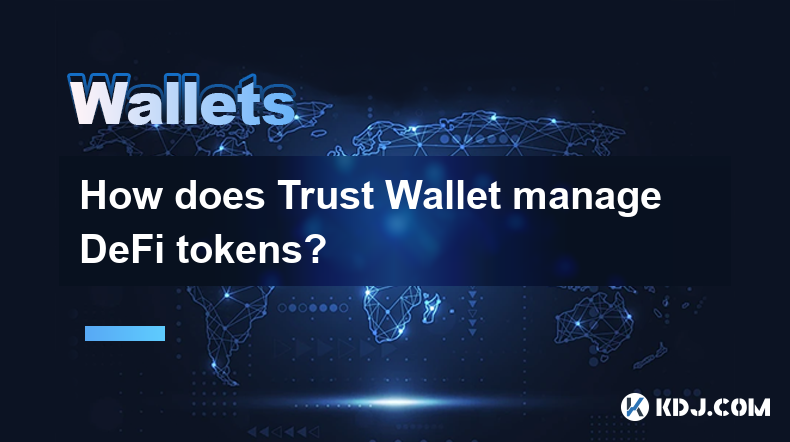
Trust Wallet is a popular mobile cryptocurrency wallet that supports a wide range of digital assets, including DeFi tokens. Managing DeFi tokens with Trust Wallet involves several key aspects, from adding tokens to interacting with decentralized applications (dApps). This article will guide you through the process of managing DeFi tokens in Trust Wallet, covering the essential steps and functionalities.
Adding DeFi Tokens to Trust Wallet
To start managing DeFi tokens, you first need to add them to your Trust Wallet. Here's how you can do it:
- Open the Trust Wallet app on your mobile device.
- Tap on the "+" icon at the top right corner of the main screen.
- Select "Add Custom Token". You will be prompted to choose the network (e.g., Ethereum, Binance Smart Chain).
- Enter the token details: You need to provide the contract address, name, symbol, and decimals of the token. This information can usually be found on the official website or on token listing platforms like CoinMarketCap or CoinGecko.
- Tap "Save" to add the token to your wallet.
Once the token is added, it will appear on your main screen, allowing you to view your balance and send or receive the token.
Interacting with DeFi Protocols
Trust Wallet enables you to interact directly with various DeFi protocols and dApps. Here’s how you can do it:
- Navigate to the "DApps" section in the Trust Wallet app.
- Browse or search for the DeFi protocol you want to interact with. Popular options include Uniswap, PancakeSwap, and Aave.
- Connect your wallet to the dApp by selecting Trust Wallet as your wallet provider. You may need to confirm the connection in a pop-up window.
- Follow the on-screen instructions to perform actions like swapping tokens, providing liquidity, or borrowing/lending assets.
Trust Wallet’s integration with dApps makes it easy to manage your DeFi activities without leaving the app.
Staking and Yield Farming
Staking and yield farming are popular ways to earn passive income with DeFi tokens. Trust Wallet supports these activities through its integration with various DeFi platforms. Here’s how you can participate:
- Select a DeFi platform that supports staking or yield farming, such as PancakeSwap or SushiSwap.
- Connect your Trust Wallet to the platform as described in the previous section.
- Navigate to the staking or farming section of the platform. This is usually labeled as "Stake", "Farm", or "Yield".
- Choose the pool or farm you want to participate in. Each pool will have different tokens and reward structures.
- Enter the amount of tokens you want to stake or provide as liquidity.
- Confirm the transaction in Trust Wallet. You may need to pay a small gas fee depending on the network.
Once your tokens are staked or provided as liquidity, you can start earning rewards based on the platform’s rules.
Managing Token Balances and Transactions
Trust Wallet provides a user-friendly interface for managing your DeFi token balances and transactions. Here’s how you can keep track of your assets:
- View your token balances on the main screen of the app. Each token you have added will be displayed with its current balance.
- Tap on a token to see more details, including your transaction history and current price.
- Send or receive tokens by tapping on the "Send" or "Receive" buttons. You will need to enter the recipient’s address or share your own address with the sender.
- Monitor your transaction status in the "Transactions" section of the app. This will show you pending, confirmed, and failed transactions.
Trust Wallet’s intuitive design makes it easy to manage your DeFi tokens and keep track of your activities.
Security Measures for DeFi Tokens
Security is paramount when dealing with DeFi tokens, and Trust Wallet offers several features to protect your assets:
- Enable biometric authentication (fingerprint or face recognition) to secure access to your wallet.
- Use a strong password and keep it confidential.
- Backup your recovery phrase and store it in a safe place. This phrase is crucial for restoring your wallet if you lose access to your device.
- Be cautious of phishing attempts. Always double-check the URLs of dApps and never share your private keys or recovery phrase with anyone.
- Regularly update the Trust Wallet app to ensure you have the latest security patches and features.
By following these security measures, you can safely manage your DeFi tokens and protect your investments.
Frequently Asked Questions
Q: Can I manage multiple DeFi tokens in one Trust Wallet account?
A: Yes, you can manage multiple DeFi tokens in one Trust Wallet account. Simply add each token using the "Add Custom Token" feature, and they will all be displayed on your main screen.
Q: Is it possible to swap DeFi tokens directly within Trust Wallet?
A: While Trust Wallet itself does not have a built-in swap feature, you can easily swap DeFi tokens by connecting to dApps like Uniswap or PancakeSwap through the "DApps" section of the app.
Q: How can I check the performance of my staked DeFi tokens in Trust Wallet?
A: To check the performance of your staked DeFi tokens, you need to visit the specific DeFi platform where you staked them. After connecting your Trust Wallet, navigate to the staking or farming section to view your rewards and performance metrics.
Q: Are there any fees associated with managing DeFi tokens in Trust Wallet?
A: Managing DeFi tokens in Trust Wallet itself is free, but you may incur network fees (gas fees) when interacting with DeFi protocols or making transactions on the blockchain. These fees vary depending on the network and current demand.
Disclaimer:info@kdj.com
The information provided is not trading advice. kdj.com does not assume any responsibility for any investments made based on the information provided in this article. Cryptocurrencies are highly volatile and it is highly recommended that you invest with caution after thorough research!
If you believe that the content used on this website infringes your copyright, please contact us immediately (info@kdj.com) and we will delete it promptly.
- Bitcoin's Pattern Break: Are HODLers the Key to the Next Surge?
- 2025-07-04 18:50:12
- Bitcoin Price, Trump's Bill, and the $150K Dream: A NYC Take
- 2025-07-04 19:50:12
- Ethereum, LILPEPE, and the July Bounce: Will Pepe Steal ETH's Thunder?
- 2025-07-04 19:10:12
- Binance Institutional Loans: Unlocking 4x Leverage and Zero Interest for Whales
- 2025-07-04 19:15:12
- Bitcoin Bull Run: Analysts Eye Peak in Late 2025?
- 2025-07-04 19:20:13
- Pepe Indicators, Bullish Forecast: Can the Meme Coin Rally?
- 2025-07-04 19:25:12
Related knowledge
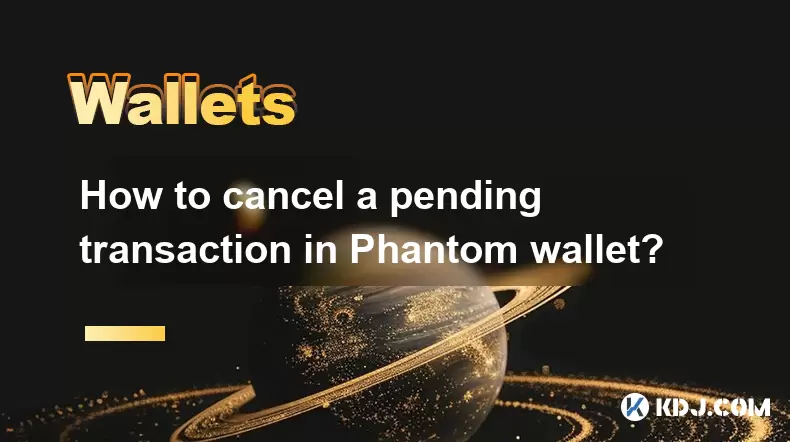
How to cancel a pending transaction in Phantom wallet?
Jul 03,2025 at 07:21pm
Understanding Pending Transactions in Phantom WalletA pending transaction in the Phantom wallet occurs when a user initiates a transfer or interaction with the Solana blockchain, but it hasn't yet been confirmed by the network. This can happen due to various reasons such as low transaction fees, network congestion, or incorrect gas settings. It's import...
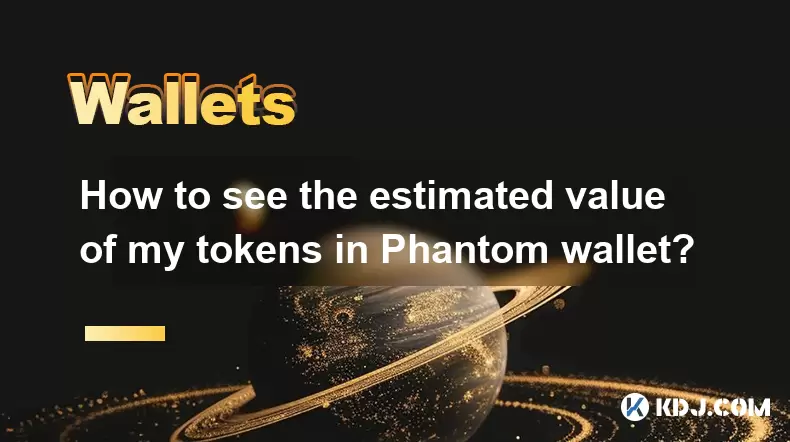
How to see the estimated value of my tokens in Phantom wallet?
Jul 04,2025 at 12:21am
What is Phantom Wallet?Phantom wallet is one of the most popular cryptocurrency wallets designed for the Solana blockchain. It allows users to store, send, receive, and manage various tokens built on Solana, including SPL tokens and NFTs. The wallet offers a user-friendly interface, making it accessible for both beginners and advanced users in the crypt...
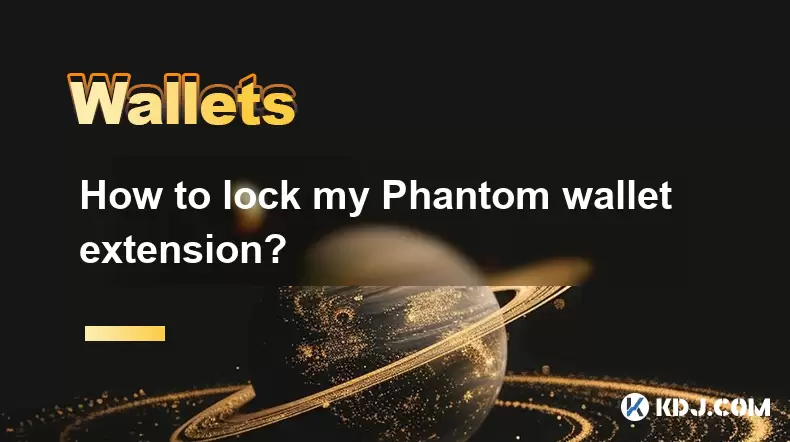
How to lock my Phantom wallet extension?
Jul 03,2025 at 11:14am
What Is the Phantom Wallet and Why Lock It?The Phantom wallet is a popular non-custodial cryptocurrency wallet designed for interacting with the Solana blockchain. Supporting both browser extensions and mobile apps, Phantom allows users to store, send, receive, and stake SOL tokens, as well as interact with decentralized applications (dApps). Securing y...

Does Phantom wallet offer two-factor authentication (2FA)?
Jul 03,2025 at 09:00am
Understanding Phantom Wallet and Its Security FeaturesPhantom wallet is a widely used non-custodial cryptocurrency wallet that supports the Solana blockchain. It allows users to store, send, receive, and interact with decentralized applications (dApps) seamlessly. As security is a top priority for any crypto wallet user, security features like two-facto...
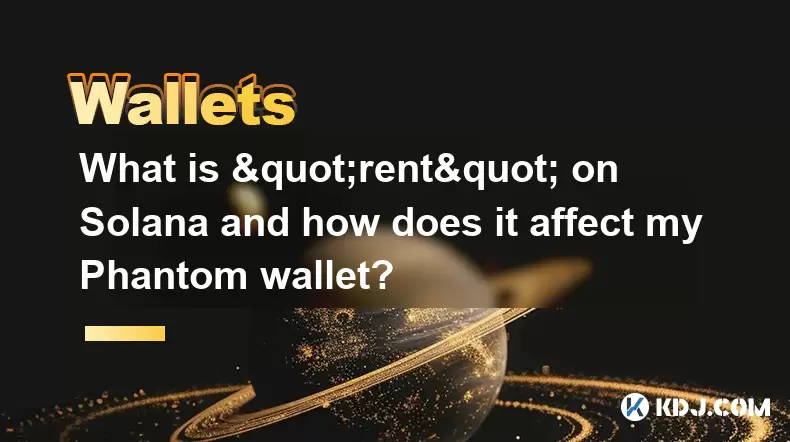
What is "rent" on Solana and how does it affect my Phantom wallet?
Jul 02,2025 at 08:35pm
Understanding 'Rent' on SolanaIn the context of Solana, the term 'rent' refers to a storage fee that users pay for maintaining data on the blockchain. Unlike Ethereum, where storage costs are paid once via gas fees during contract deployment, Solana implements a recurring cost model to ensure efficient usage of network resources. This means that any acc...
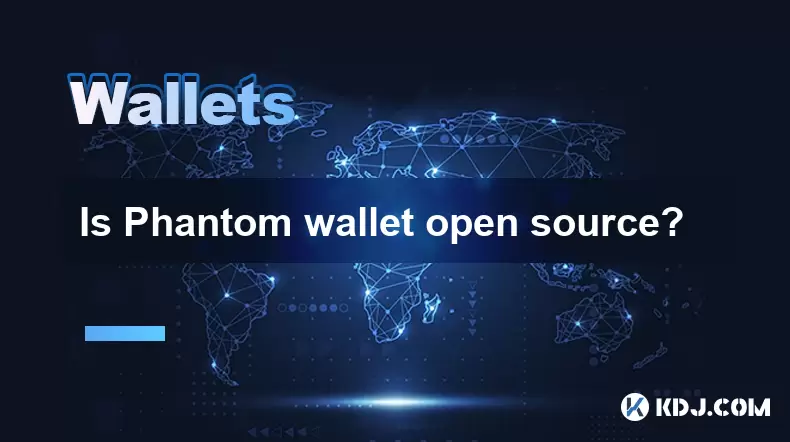
Is Phantom wallet open source?
Jul 03,2025 at 12:29am
What is Phantom Wallet?Phantom wallet is a non-custodial cryptocurrency wallet primarily designed for the Solana blockchain. It allows users to store, send, receive, and interact with decentralized applications (dApps) on the Solana network. The wallet is available as a browser extension and mobile application, offering a seamless experience for both be...

How to cancel a pending transaction in Phantom wallet?
Jul 03,2025 at 07:21pm
Understanding Pending Transactions in Phantom WalletA pending transaction in the Phantom wallet occurs when a user initiates a transfer or interaction with the Solana blockchain, but it hasn't yet been confirmed by the network. This can happen due to various reasons such as low transaction fees, network congestion, or incorrect gas settings. It's import...

How to see the estimated value of my tokens in Phantom wallet?
Jul 04,2025 at 12:21am
What is Phantom Wallet?Phantom wallet is one of the most popular cryptocurrency wallets designed for the Solana blockchain. It allows users to store, send, receive, and manage various tokens built on Solana, including SPL tokens and NFTs. The wallet offers a user-friendly interface, making it accessible for both beginners and advanced users in the crypt...

How to lock my Phantom wallet extension?
Jul 03,2025 at 11:14am
What Is the Phantom Wallet and Why Lock It?The Phantom wallet is a popular non-custodial cryptocurrency wallet designed for interacting with the Solana blockchain. Supporting both browser extensions and mobile apps, Phantom allows users to store, send, receive, and stake SOL tokens, as well as interact with decentralized applications (dApps). Securing y...

Does Phantom wallet offer two-factor authentication (2FA)?
Jul 03,2025 at 09:00am
Understanding Phantom Wallet and Its Security FeaturesPhantom wallet is a widely used non-custodial cryptocurrency wallet that supports the Solana blockchain. It allows users to store, send, receive, and interact with decentralized applications (dApps) seamlessly. As security is a top priority for any crypto wallet user, security features like two-facto...

What is "rent" on Solana and how does it affect my Phantom wallet?
Jul 02,2025 at 08:35pm
Understanding 'Rent' on SolanaIn the context of Solana, the term 'rent' refers to a storage fee that users pay for maintaining data on the blockchain. Unlike Ethereum, where storage costs are paid once via gas fees during contract deployment, Solana implements a recurring cost model to ensure efficient usage of network resources. This means that any acc...

Is Phantom wallet open source?
Jul 03,2025 at 12:29am
What is Phantom Wallet?Phantom wallet is a non-custodial cryptocurrency wallet primarily designed for the Solana blockchain. It allows users to store, send, receive, and interact with decentralized applications (dApps) on the Solana network. The wallet is available as a browser extension and mobile application, offering a seamless experience for both be...
See all articles

























































































